Best Practices to Follow for Successful Strategic Procurement


In procurement, strategy and success are practically synonymous.
This is especially true today when markets are increasingly volatile, customer demands are ever-changing, and the supply chain faces disruptions caused by pandemics, political conflicts, and raw material shortages.
To survive, let alone thrive, in such a landscape, having a rock-solid procurement strategy is a must.
But what exactly does a successful procurement strategy even entail?
That’s precisely where this article comes into play.
In this article, we’ll explore the best practices for achieving procurement success, illustrate their efficacy through real-world examples, and support our claims with research-backed evidence.
So, let’s dive in.
Successful strategic procurement is all about the long game.
Instead of just putting out fires, it prioritizes proactive thinking and considers the broader implications of procurement decisions, looking beyond immediate cost savings and short-term benefits.
Greg Tennyson, former SVP of Strategy and Procurement at Fairmarkit, emphasizes that it’s precisely this sort of thinking that separates top-tier CPOs from the rest.
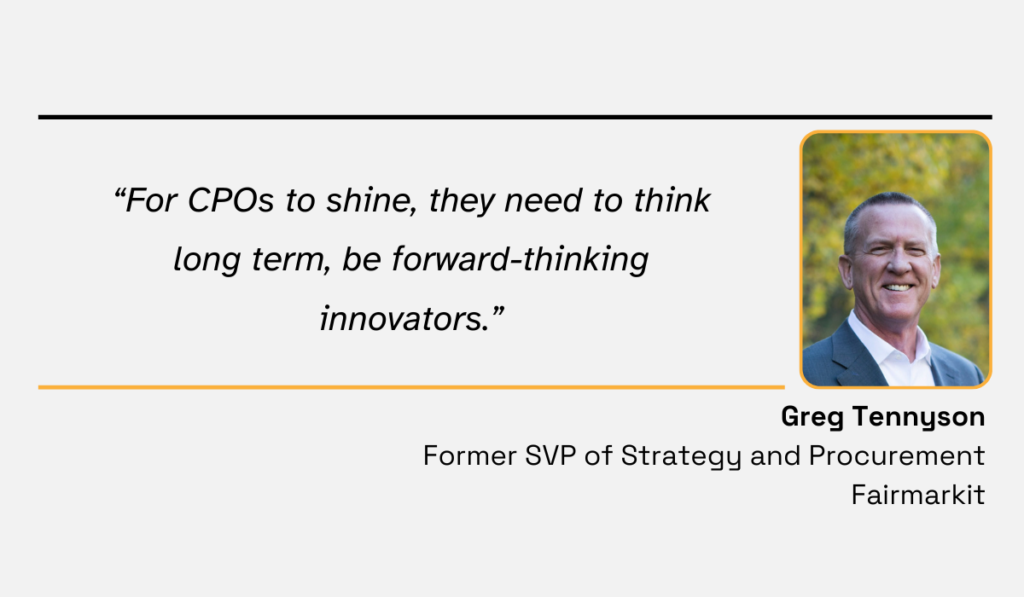
Illustration: Veridion / Quote: Procurement Magazine
According to him, real procurement experts understand that adopting new technologies, refining processes, or investing in employee education may not deliver instant results, but these steps are vital for long-lasting success.
And he is absolutely right.
Long-haul strategies lead to much smoother operations, the ability to proactively mitigate risks, and most importantly, sustainable resilience to disruptions.
Gregor Stühler, CEO and founder of Scoutbee, puts it simply and aptly.
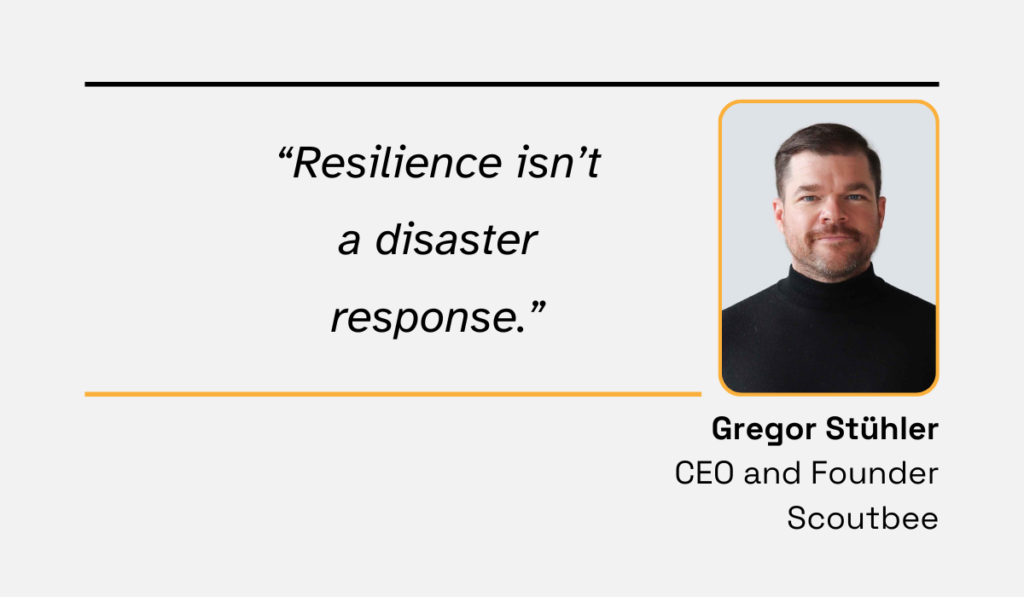
Illustration: Veridion / Quote: Supply Chain Digital on YouTube
Indeed, resilience can only be achieved through proactive, strategic, and long-term thinking—not through short-term fixes.
And guess what?
It seems like procurement professionals are increasingly embracing this mindset.
A 2021 Deloitte study reveals that nearly 73% of them prioritize innovation, which is at the core of the long-term value creation.
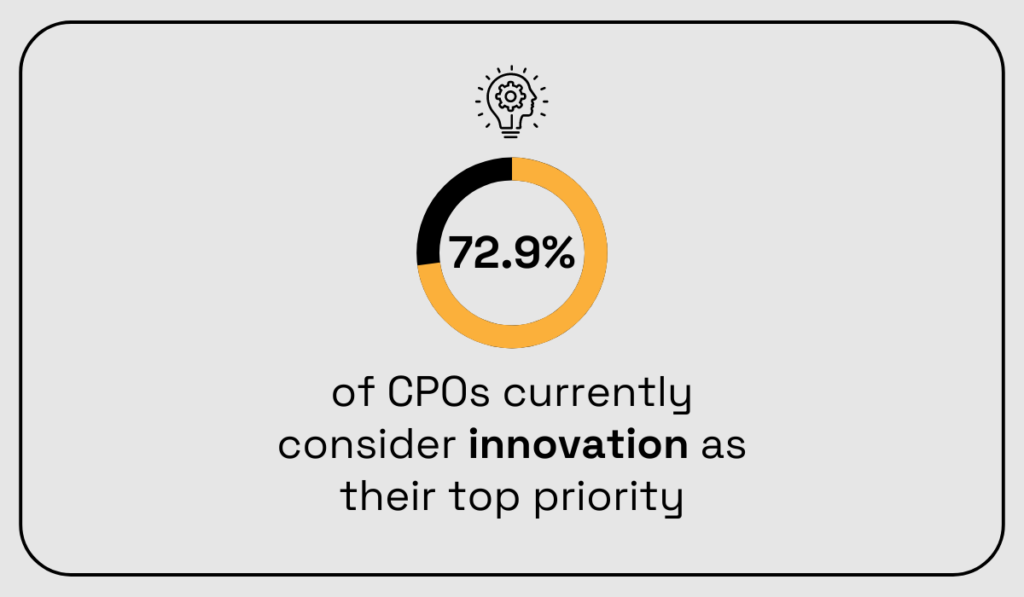
Illustration: Veridion / Data: Deloitte
It breeds stronger supplier relationships, streamlines processes, and puts companies at the forefront of technological advancements, keeping them relevant, competitive, and resilient.
If you’re looking for an example of a business that aligns with this kind of approach, look no further than Unilever and its Procurement with Purpose initiative.
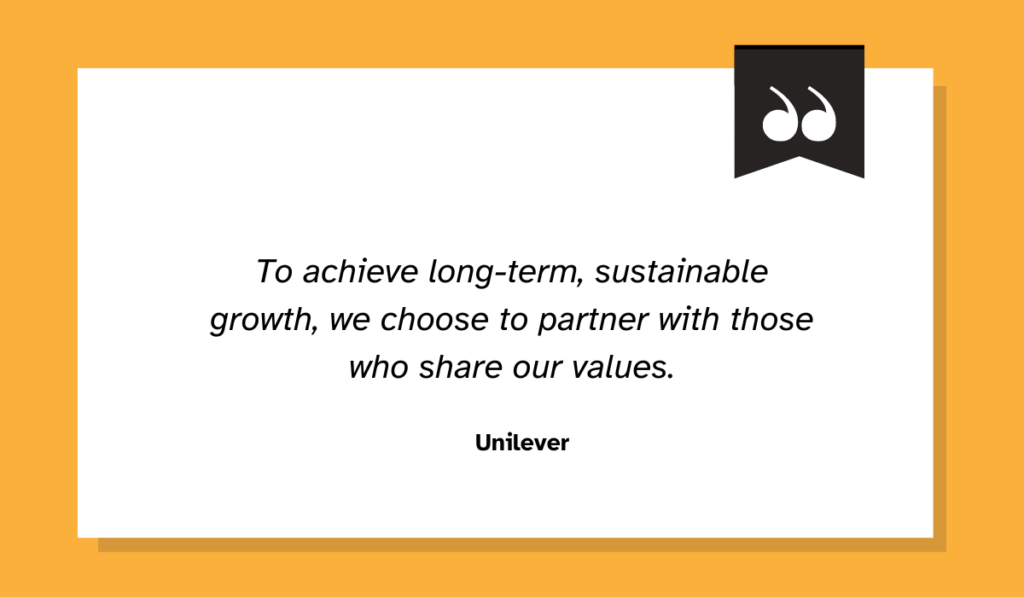
Illustration: Veridion / Quote: Unilever
Focusing on helping Unilever make “sustainable living commonplace”, this strategy puts partnering with suppliers who share their vision first, instead of finding the most cost-effective products for immediate financial gains.
Their procurement team invests significant time and effort into selecting suppliers who are a perfect match because they know their partners will ultimately help them make a difference for both the company and the community.
So, what’s the takeaway?
Procurement isn’t only about saving money anymore, but about creating real, sustainable value for organizations.
That much is clear to everyone.
And to succeed in this new era, you need to be able to think ahead, play the long game, and dare to innovate.
If you want to make informed, strategic decisions in procurement, you should make them more data-driven.
But remember; not just any data will do.
You’re going to need fresh, up-to-the-minute insights if you’s goal is to stay ahead of the curve.
You wouldn’t want to make any significant choices based on irrelevant, outdated information or assumptions, right?
Yes, data is of paramount importance in procurement.
In fact, 56% of procurement professionals think that investing in data-driven decision-making is key to driving growth, attracting talent, and mitigating risks.
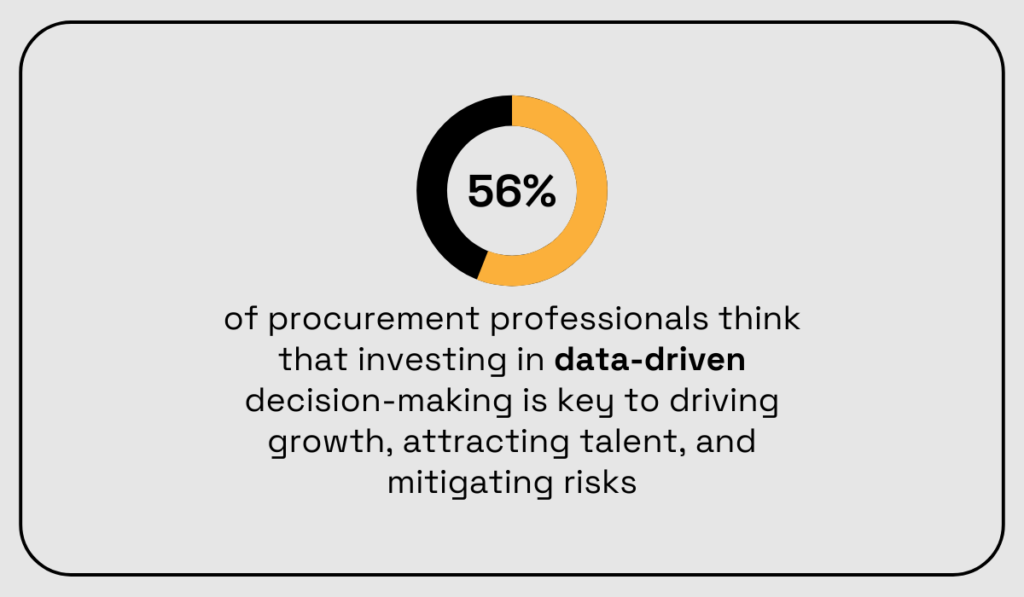
Illustration: Veridion / Data: Keelvar
However, this is only true if the data is current.
After all, market conditions constantly change—suppliers can go bankrupt, customer demands evolve, and so do industry standards and regulatory guidelines.
To stay ahead, you need to keep up with these changes.
How do you expect to do that if you don’t even have a clear view of your current performance and operations?
John Butcher, Group Procurement Director at Just Eat Takeaway.com, a global food tech company, would definitely agree.
By focusing on data visibility and timeliness, he has been able to transform the procurement function within the company beyond recognition.
From spend analysis to sourcing, timely, detailed insights have made all the difference for all of their processes, he says.
Here’s how they would use the data for supplier management:
“[…] and we still use that relatively basic, but really useful data, to show to people, ‘Did you know that this supplier has suddenly gone from 125th in our supplier rankings to number one over the period of three months?’ These insights also changed the way in which suppliers were managed, especially if they were business critical […]”
So, how can you make sure your data is like John’s: always up-to-date and ready for impactful decision-making?
The first step is to eliminate outdated procedures and tools.
If you’re still using spreadsheets to track your processes and compile information, you can’t really expect your data to be timely, or even accurate.
Let’s face it: manual data entry and timeliness don’t really go hand in hand.
Then, you’re going to need to find a more reliable tool for data gathering.
Technology, here, is definitely the way to go.
It yields the most accurate, precise, and up-to-date insights, with no need for manual input.
For example, if you want to improve your supplier information, use an AI-powered sourcing tool like Veridion.
Veridion not only lets you tap into a huge database with millions upon millions of manufacturers, service providers, distributors, products, and services, but it also updates that data on a weekly basis.
It doesn’t get any fresher than that.

Source: Veridion
Plus, Veridion enables you to monitor supplier performance, confidence scores, and custom-made risk factors, immediately alerting you if certain pre-defined supplier risks are detected.
This way, you’re always in the know and ready to tackle potential issues proactively.
The bottom line is this: fresh insights are a must for strategic decision-making and problem-solving in procurement, no two ways about that.
It helps you avoid risks, ensure compliance, maintain optimal inventory levels, keep up with market trends, and ultimately, stay ahead of the game.
Suppliers play a crucial role in strategic procurement and should be treated accordingly.
So, instead of squeezing them for short-term cost savings, focus on building collaborative relationships with them, based on trust, transparency, and mutual value creation.
This approach doesn’t just benefit the supplier.
It brings you a host of advantages as well, from timely deliveries and top-notch service to better product quality, better prices, and even insider deals or insights your competitors might miss out on.
Most importantly, this sort of teamwork serves as a shield against risks and disruptions, says Alex Saric, Chief Marketing Officer at Ivalua.
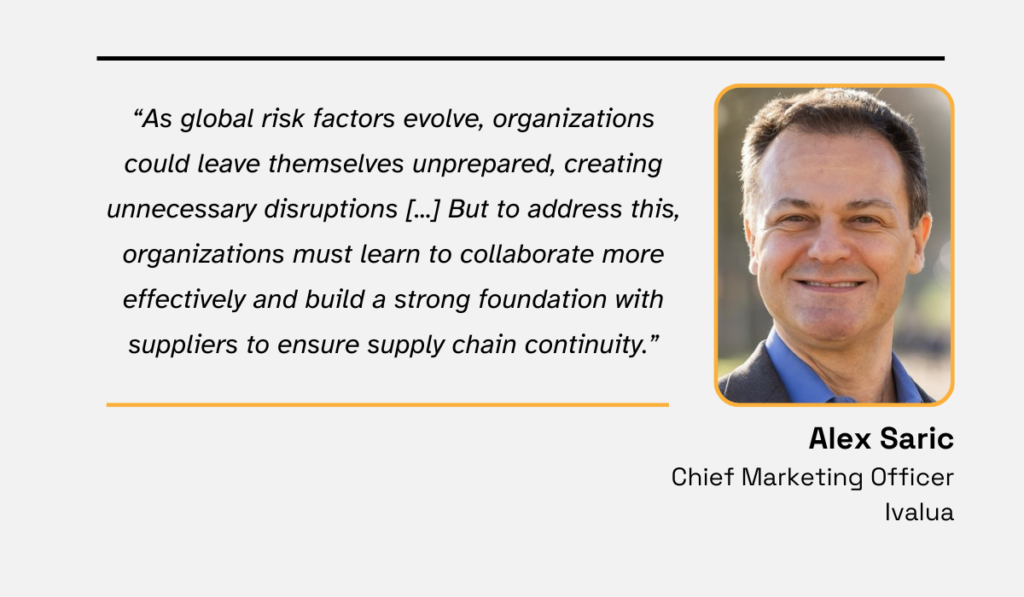
Illustration: Veridion / Quote: Supply Chain Management Review
It helps ensure stable and predictable supply, or even priority during shortages and allows you to have open discussions about any disputes, obstacles, or misalignments.
Essentially, with the right supplier by your side, you never face challenges alone.
A study conducted by Forrester Consulting on behalf of Ivalua provides interesting insight into this topic.
It reveals that the majority of procurement experts now view their suppliers as strategic partners and sources of differentiation, rather than mere providers of goods or services.
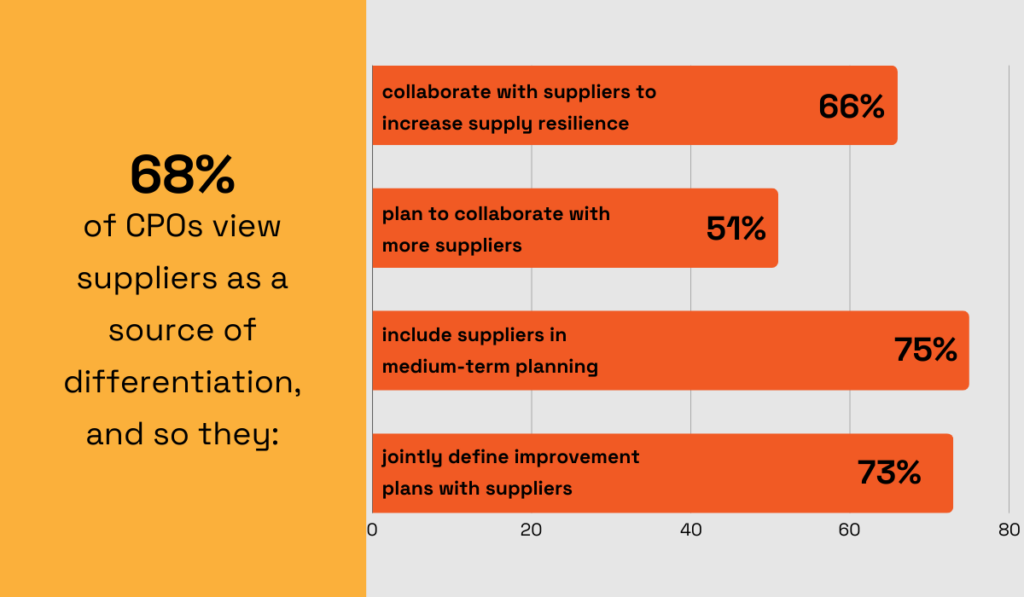
Illustration: Veridion / Data: Ivalua
Besides, many professionals in the field collaborate or plan to collaborate more with suppliers to increase supply chain resilience and include them in medium-term planning.
It seems like, in the wake of recent disruptions like the COVID-19 pandemic, collaboration and relationship-building are gaining some traction in procurement.
David Chua, former Head of Global Sourcing at WIK Group, embodies this collaborative spirit.
He sees suppliers as invaluable allies, not just in day-to-day operations, but in times of crisis as well:
“Relationship management, for me, is key. […] t’s also about understanding what we are going to be able to do to get support from suppliers, both financially and non-financially. By non-financial support, I mean in times of crisis, like right now with Covid-19. If you have a good relationship with suppliers, they actually allocate more resources to support you. Procurement is all about relationship management that you build for a long time. You get returns when it is needed, not simply on a daily basis.”
That’s why he, upon joining WIK Group, immediately focused on improving these partnerships, moving away from prioritizing cost or quality discussions and exploring the relationships further.
He would accompany his team to supplier meetings and even meet with key suppliers personally to discuss future goals:
“After I looked at internal systems and I looked at improving the way we at WIK dealt with suppliers, I spent a month travelling outside the business to speak with all of our key suppliers. I introduced myself to every single one of them and I sat down, I spoke with them and I listened to them. It was about outlining where we want WIK to be in the future and the role they can play in that.”
This eventually helped him achieve what he initially set out to do: fortify buyer-supplier cooperation through communication, meaningful connections, and complete transparency.
As a result, WIK Group unlocked more cost savings, higher operational efficiency, and innovation, all while maintaining the highest standards in product and service delivery.
That’s what good relationships between buyers and suppliers are supposed to look like.
They are founded on collaboration, fairness, loyalty, and joint planning for the future, which ultimately brings success to both parties.
The procurement function plays a crucial role in the broader success of a business, and therefore, it can’t operate independently of the company’s goals.
In fact, every decision made, every sourcing strategy created, and every supplier partnership established should ultimately bring the business closer to its goals.
While this may sound obvious, it’s often much easier said than done.
Markets and customers change, and consequently, so do overall company objectives.
To ensure continuous alignment with these goals, two things are essential: communication and technology.
Cross-departmental communication ensures every team is on the same page regarding the objectives.
Marlene Paola Molina, Business Development Manager at Phoenix Calibration, explains why that is so important:
“Integrating procurement with departments like sales/manufacturing/planning would allow us to plan purchases ahead of time or on time. One of the biggest issues procurement faces is working with too many urgent requirements, which leads to unplanned or over-budget orders […] Knowing about new product developments, or sales projections, season’s changes, could help a lot.“
She notes that a lack of collaboration not only results in unmet targets but also leads to the perception of procurement as inefficient.
Obviously, this is something any procurement professional would rather avoid.
Therefore, be sure to hold regular meetings with colleagues from other departments to stay informed about the company’s activities and strategic direction.
Another factor to consider is technology or, more specifically, the integration of different technologies.
Integrating the software used by your team with that used by other departments, such as, for instance, accounting or sales, ensures real-time data sharing, creates a centralized data repository, and establishes full end-to-end visibility.
This makes cooperation much more streamlined and eventually leads to greater procurement efficiency.
Satya Mishra, Director of Product Management and Software Development at Amazon, agrees with this approach.
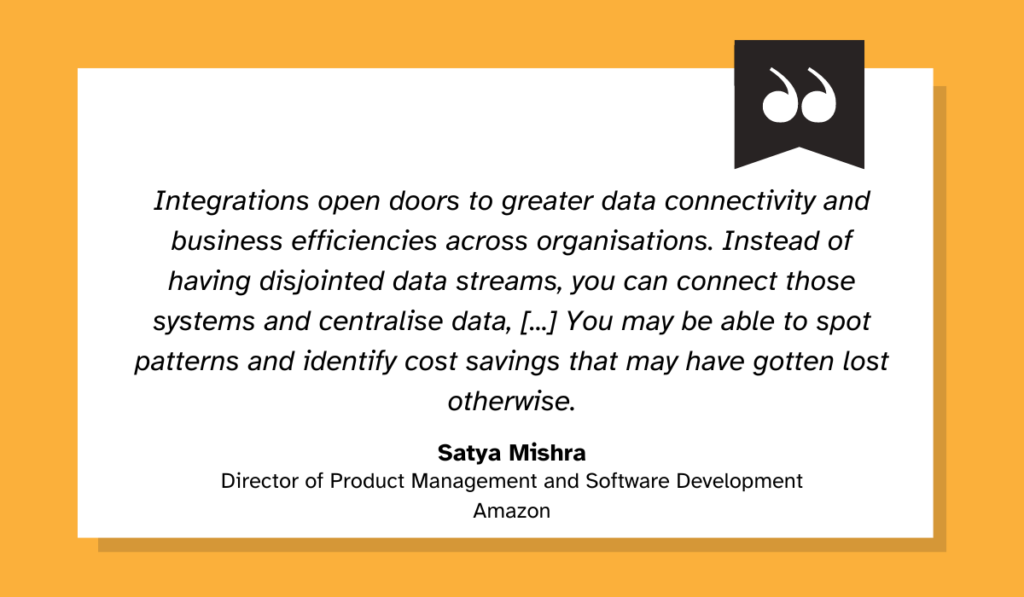
Illustration: Veridion / Quote: CPOstrategy
A great example illustrating the instrumental role of procurement in achieving company goals is Olam, a food and agri-business firm.
Driven by the company’s expansion objectives, its procurement function shifted from a decentralized buying model to a more strategic approach, fostering collaboration, using data analytics technology, and boosting supplier relationships.
Piotr Teodorczyk, former VP and Head of Global Procurement at Olam, explains that each of these changes was led by only one thing: alignment with company goals.
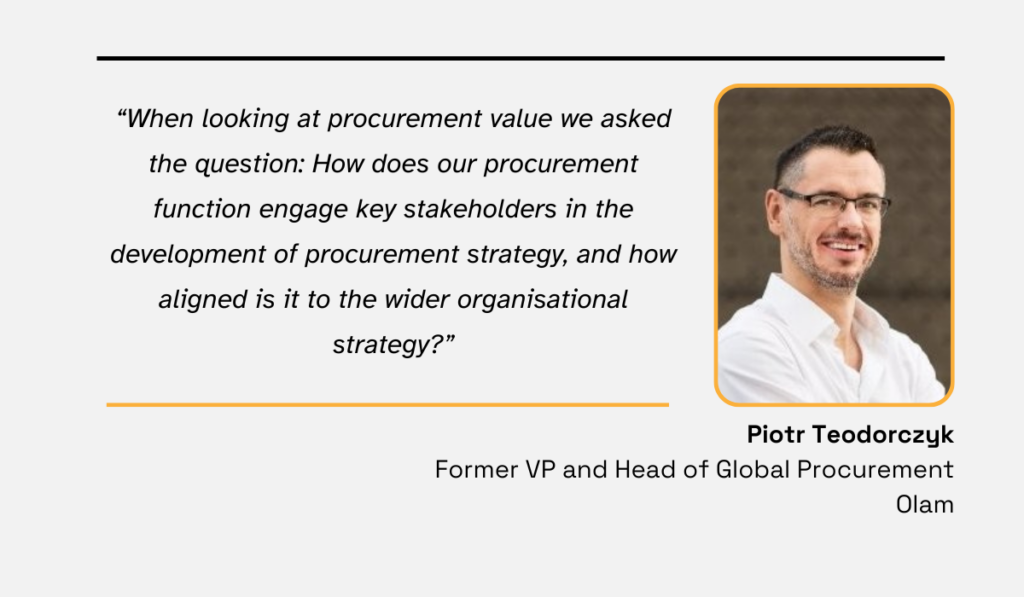
Illustration: Veridion / Quote: CPOstrategy
The approach was a success.
It propelled the company forward and transformed the procurement team from a service function to a fully trusted business partner.
And that’s what strategic procurement is all about.
Strategic procurement is an ongoing effort, not a one-time task.
You and your team should consistently evaluate procedures and strategies, implement necessary changes, and always be on the lookout for areas needing some improvement.
But, where to start?
Well, the first step towards more efficient procurement is assessing the current situation and pinpointing deficiencies, if there are any.
Are there cumbersome processes that could be eliminated through automation?
Could contract management be a bit better?
Is your supplier management approach inefficient?
Below, you can see findings from The Hackett Group’s survey on top improvement initiatives for CPOs in 2024.
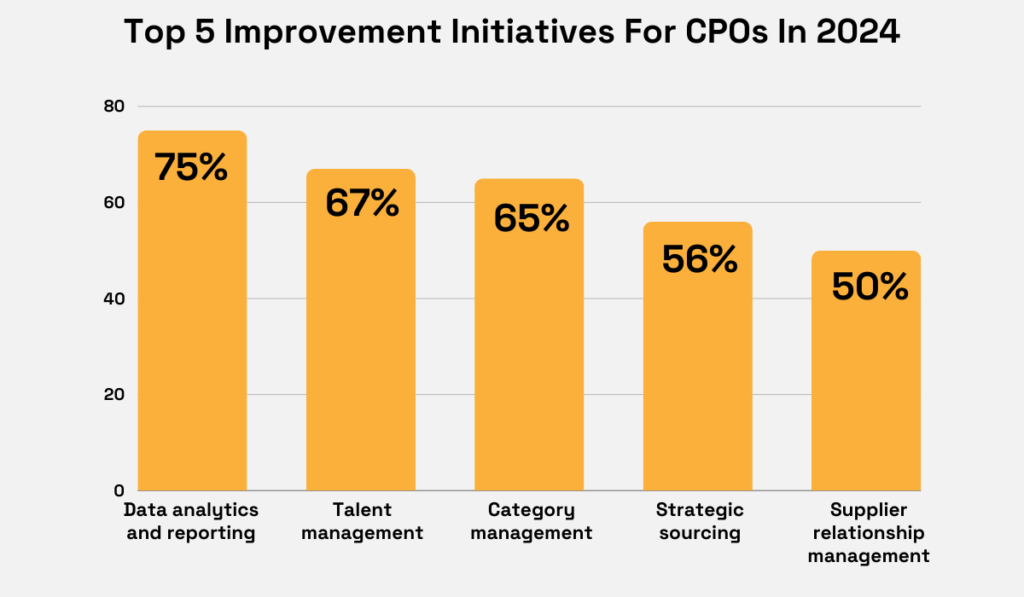
Illustration: Veridion / Data: The Hackett Group
You can use this list as inspiration.
Knowing what other professionals in the field are working on can guide your improvement efforts and help you stay ahead of the competition.
Once you’ve identified the areas you want to improve, you’re going to need to establish, monitor, and analyze relevant Key Performance Indicators (KPIs).
For instance, to boost supplier management, focus on metrics like:
Regular KPI tracking will allow you to keep an eye on your progress and assess the effectiveness of implemented changes.
Ultimately, making this process a part of routine practices will create a culture where growth and advancement are just another part of the job.
Analyzing performance metrics and seeking ways to refine processes will become second nature to the entire team.
Granted, constantly striving for betterment may seem like a lot of work, but it’s well worth the effort.
Just look at Starbucks.
Through restructuring their procurement processes, streamlining supplier management, and automating workflows, they realized over $300 million in annual procurement savings and boosted supplier performance by 15%.
And you can do it too.
You don’t need to be an industry giant to take the business to the next level, but you do need to keep measuring your performance, evaluating your strategy, and improving.
Measure, evaluate, improve. These are the three words that perfectly summarize the main point of this article.
Indeed, strategic procurement hinges on using fresh data to assess performance and then utilizing these insights to refine various aspects of the process, be it supplier relationships, sourcing strategies, or something else, all while maintaining a focus on long-term company objectives.
Doesn’t seem like an easy feat?
Well, it’s not supposed to be.
After all, if it were a breeze, everyone would be a procurement expert.
However, if you do your best to implement these practices, and stay consistent, focused, and vigilant, you just might make it and take your procurement game to the next level.